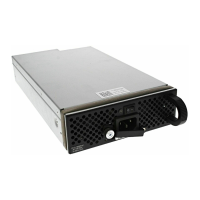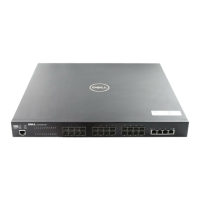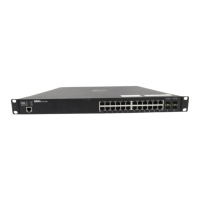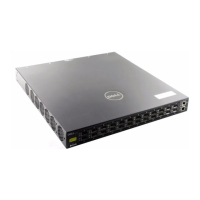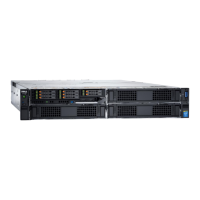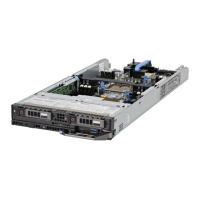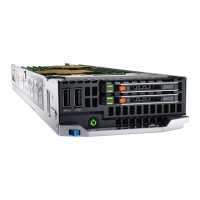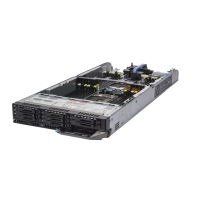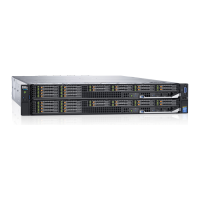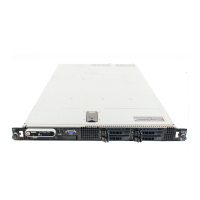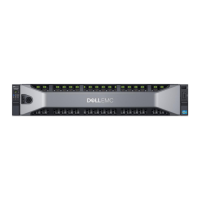Stacking | 549
Supported Stacking Topologies
Stacking is supported on the MXL 10/40GbE Switch in ring and daisy-chain topologies.
Example 1: Dual-Ring Stack Across Multiple Chassis
Using two separate stacks in a dual-ring stacking topology provides redundancy and increased high
availability in case of stack failure. Also, stacking upgrades are simplified when you have to take one stack
offline (Figure 31-3).
Figure 31-3. Dual-Ring Stacking Topology for MXL 10/40GbE Switches
Note: A ring topology is recommended under normal operation because it provides increased resiliency
when compared with a daisy chain topology. In daisy chain topology, any change in a non-edge stack unit
causes a split stack.
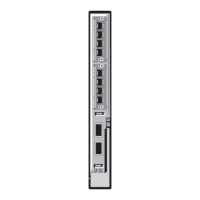
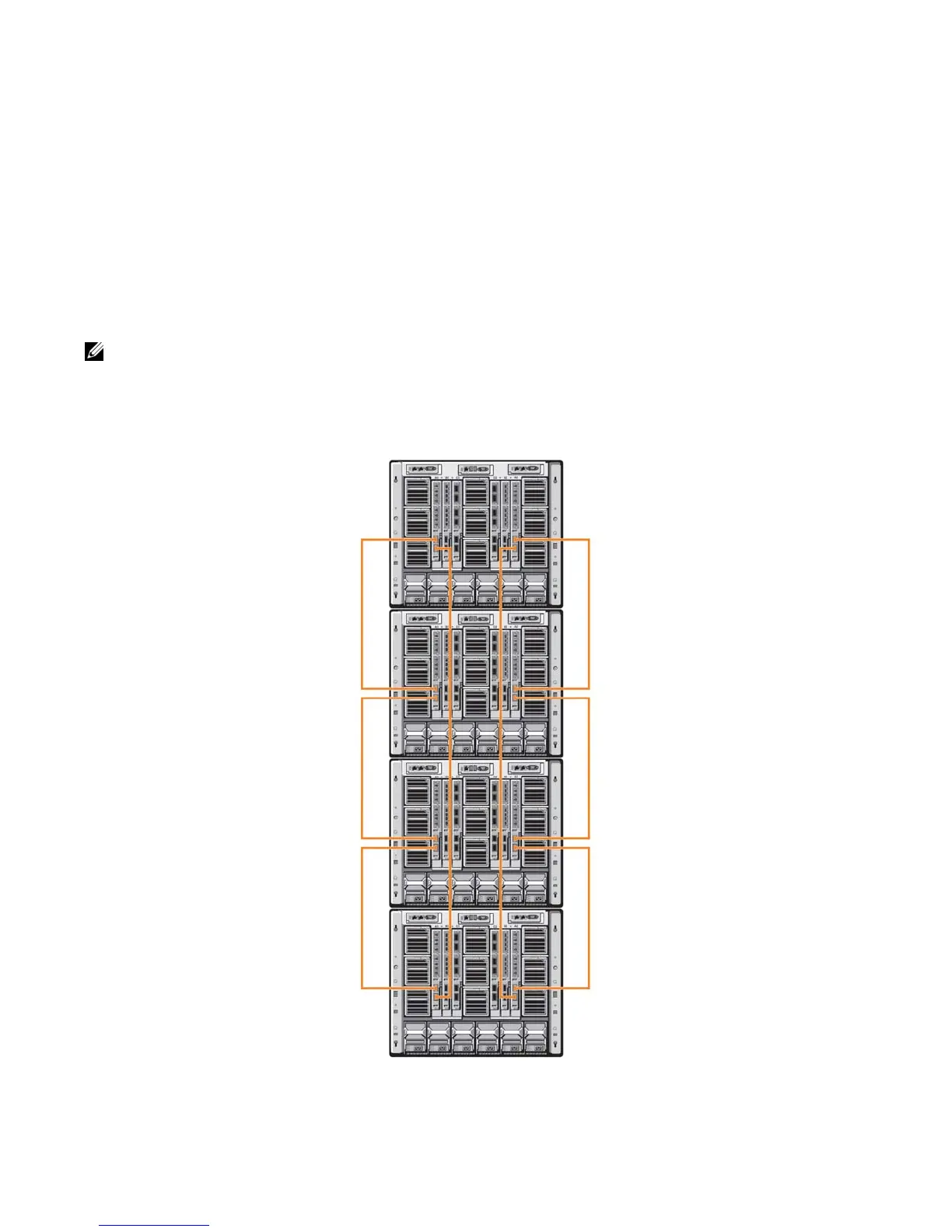